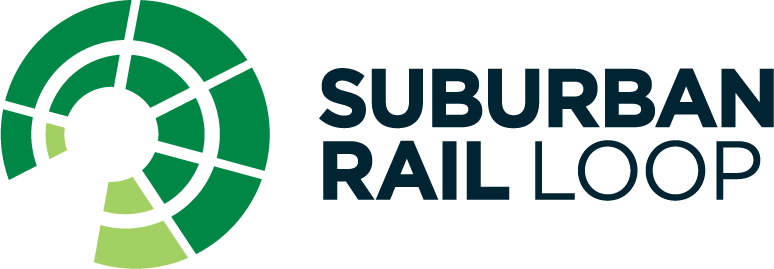
Cody Phelan turned a love of design and the Melways into a career in science – working with leading demographer Bernard Salt, supporting the response to the 2019 Victorian bushfires and now using data and digital mapping to help shape Suburban Rail Loop (SRL) as a spatial analyst and cartographer.
Cody wasn’t born into science – you wouldn’t find her playing with test tubes and beakers as a kid. On International Day of Women and Girls in Science, Cody encourages the next generation of women to think laterally and consider what unexpected opportunities a career in science might offer.
‘The funny thing is, I didn’t actually like science in school,’ Cody says.
‘I loved drawing and playing SimCity – I thought I’d be an interior designer like my fabulous aunty, or an architect designing houses.’
A blossoming interest in maps
Working with demographer Bernard Salt
It didn’t take long for a career in science to deliver amazing opportunities for Cody. Shortly after completing her degree in Geospatial Science and Multimedia Cartography at RMIT University, Cody was at KPMG, working for renowned Australian demographer, Bernard Salt.
By using spatial data and maps to forecast demographic trends, Cody used her skills to inform real-world decisions – for clients from major government departments to commercial property developers.
‘It was an amazing experience. We travelled the country to better understand an area’s demographic – I was seeing my work included in presentations to auditoriums of 700 people and published in articles in The Australian.’
‘We investigated the best location for a new university to be built in Brisbane, and a tender went to Sunshine Coast University. Now there is a campus there! Seeing my work make a positive impact was really rewarding, so I looked for opportunities to work on large-scale projects that would give me a sense of purpose.’
The bushfire season heats up
Cody moved from consultancy to Parks Victoria so she could be close to the decision-making process and follow projects from conception to delivery. Seeing her cartography transformed into glossy brochures was satisfying – from visitor guides and camping maps, to detailed maps for environmental management plans.
It was during Victoria’s harrowing bushfire season in 2019 and 2020 that Cody realised how important mapping could be.
‘We were working with emergency services and government departments around the clock to make sure they had accurate, high-quality data and maps that were constantly updated.’
‘From information about whether roads were blocked or open, or how roads were sealed to help plan evacuations, the teams were using mapping and data to make critical decisions and keep people safe in life and death situations.’
Next stop Suburban Rail Loop
With a vast geographical footprint and delivery over multiple decades, SRL was the perfect opportunity to combine Cody’s interests in cartography and demographics, and work on a transformative infrastructure project.
Since early 2020, Cody has been converting complex spatial data into visualisations and maps, managing SRL’s digital mapping platforms, and forecasting demographic, social and economic projections to 2056.
‘We’re not just making beautiful maps and visualisations – we’re bringing data to life and helping the team make informed decisions. When you can visualise data, explore maps and models, and understand things spatially, complex data can become quite clear and it’s much easier to identify gaps, problems and opportunities.’
‘Working on a major infrastructure project like SRL means I can be in the room contributing to discussions and helping make decisions that will improve the quality of people’s lives in my home city. As we move into the construction phase, it’s going to be really exciting to see the project unfold and see our work built.’
Cody’s team provides specialist technical support and expert advice to a wide range of teams including transport planners, urban designers, engineers and other government departments.
A bright future for careers in science with SRL
Is there a future in cartography and spatial mapping? Many people think cartography is an art of the past – perhaps thinking of the beloved Melways that inspired Cody all those years ago – but nothing could be further from the truth.
‘When you look at Google Maps, think about how many people are constantly updating and maintaining the data behind that platform. When you check-in on social media, where do the geotags come from? There’s a wealth of data and science behind these tools. As long as you keep up your technical skills, you can take geospatial science and cartography anywhere.’
With SRL supporting up to 24,000 local jobs, there is a massive pipeline of opportunities for the next generation of Victorians, including a bright future for careers in science – just like Cody’s.